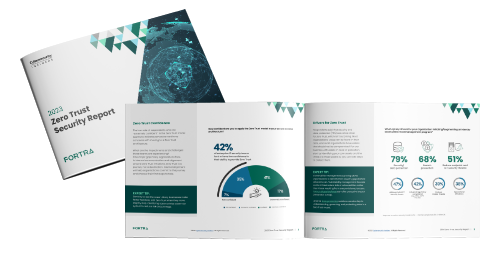The 2023 Zero Trust Security Report reveals how enterprises are implementing zero trust security in their organizations, including key drivers, adoption trends, technologies, investments, and benefits. Cybersecurity Insiders and Fortra worked together on this important research project. Our hope is that readers find the report informative and helpful in the continuation of efforts to protect IT environments.
Image
